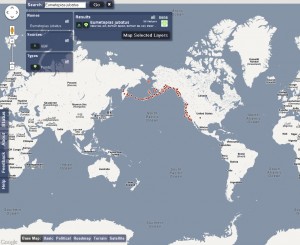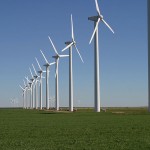Search Results for Tag: Google
Earth Day 2013 – the day google releases the tiny bears
Today is Earth Day, a day to raise the awarness for climate protection and to make clear we don’t have a backup-earth waiting in the cellar if we have wasted this one. The Earth Day movement is has quite a long tradition, this year it’s 43 years old, a milestone Google dedicates one of it’s occasional doodles.
Also these dedications have a long tradition, starting with two aliens looking at our planet in 2003 over melting polar ice in 2007 up to animated flowers in 2012.
This year’s the design is more elaborate. You will see a scene of hills with snow-capped mountains and a lake teeming with fish, bears peeping out caves, rain falling from clouds if you click them. It’s playfull, cute and may work as a mind-opening tool to make sure everyone knows what gem we live on.
Google has started a few efforts lately to support a greener environment. It’s funded renewable energy projects and published its carbon footprint for the first time.
Earth Day was born in the US in 1970. It’s idea is to activate “individuals and organizations to strengthen the collective fight against man’s exploitive relationship with the planet.”
Earth Day was born in the US in 1969, presented as a concept at the UNESCO conference in San Francisco. It’s idea was and still is to activate “individuals and organizations to strengthen the collective fight against man’s exploitive relationship with the planet.”
At the same time Gaylord Nelson U.S. Senator from Wisconsin back then thought about a national day of the environment after witnessing the ravages of the 1969 massive oil spill in Santa Barbara, California. The idea became popular, so since 1970 “Earth Day“ became a regular and steady growing event. During the 1990s the day crossed borders and became what it is today, a worldwide supported day in honor of the earth.
Mapping the world’s plant and animal life
 This can become one of the most interesting projects for people who are interested in nature, biodiversity and, of course, the impact climate change on our environment. A team of researchers from Yale and the University Colorado at Boulder have an unbelievable idea. Their plan is to map the distribution of all plant and animal life on earth. This May they have started a demo-version of their Web-based “Map of Life“.
This can become one of the most interesting projects for people who are interested in nature, biodiversity and, of course, the impact climate change on our environment. A team of researchers from Yale and the University Colorado at Boulder have an unbelievable idea. Their plan is to map the distribution of all plant and animal life on earth. This May they have started a demo-version of their Web-based “Map of Life“.
The google maps based tool will be growing constantly, the researchers say. Right now it presents over 25,000 different species of terrestrial vertebrates and North American freshwater fish. But even in this state of being the idea comes crystal clear where this map is going to be within the next months. “Map of Life” uses data from field guides, museums, citizen scientists and groups like the Global Biodiversity Information Facility, the International Union for the Conservation of Nature and the World Wildlife Fund.
Right now it’s possible for the users to search by species, viewing a map of all known distributions, or to view a list of all species records in a specific range of any spot on the map.
The developers also provide a blog to inform about the newest developments on the map.
Google’s Big Investment
Google has made some major commitments to clean energy, but the company's latest announcement might just be the biggest. Google is investing $100 million into a wind park in the U.S. state of Oregon. This isn't any ordinary wind park, either–it'll be the biggest in the world. It's called Shepherds Flat and it stretches over 30 square miles (around 640 acres) of land. The park is expected to generate 845 megawatts of energy, enough to power more than 200,000 homes. The company says Shepherds Flat will be done by 2012–only a year away!
Google also announced it's teaming up with the U.S. Department of Energy to help electric car drivers find the nearest charging station. Basically, the internet giant will use its "Google Maps" program to create an online database with all the spots where drivers can "fill up."
So far, Google has invested a total of $350 million in green energy projects. Is Google doing a good job? Or are there other companies out there that are making an even bigger commitment to fighting climate change?





Feedback